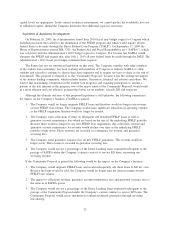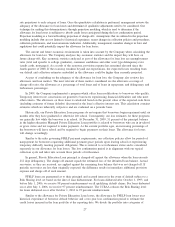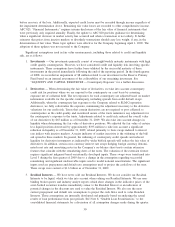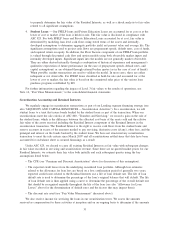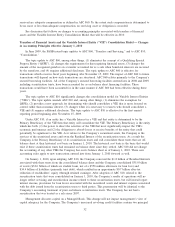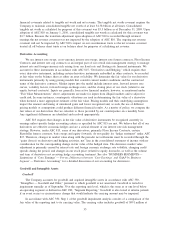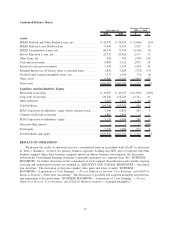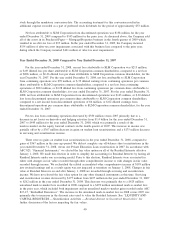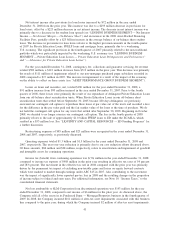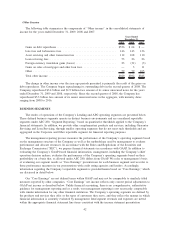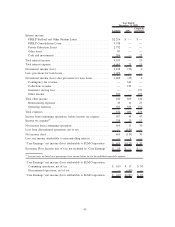Sallie Mae 2009 Annual Report Download - page 36
Download and view the complete annual report
Please find page 36 of the 2009 Sallie Mae annual report below. You can navigate through the pages in the report by either clicking on the pages listed below, or by using the keyword search tool below to find specific information within the annual report.The Company acknowledges that its stock price (as well as that of its peers) is a consideration in
determining the value of its reporting units and the Company as a whole. However, management believes the
income approach is a better measure of the value of its reporting units in the current environment. During the
latter half of 2008 and during 2009, the Company experienced a trend of lower and very volatile market
capitalization. During 2009, the Company’s stock price fluctuated significantly from a low of $3.19 in March
2009 subsequent to the Administration’s 2010 budget proposal, which included its plan to eliminate the FFELP
and require all federally funded students loans to be originated through the DSLP, to a high of $12.00 in
December 2009. At September 30 and December 31, 2009, the Company’s stock price was $8.72 and $11.27,
respectively. The Company believes the share price has been significantly reduced due to the continued
downturn in the credit and economic environment as well as uncertainties surrounding the ongoing legislative
process, as addressed previously in “OVERVIEW — Legislative and Regulatory Developments.” Management
believes these economic factors should not have a long-term impact. In addition, the Company will review and
revise, potentially significantly, its business model based on the final form of legislation upon completion of
the legislative process.
In the event that the carrying value of the reporting unit exceeds the fair value as determined in Step 1,
Step 2 of the goodwill impairment analysis compares the implied fair value of the reporting unit’s goodwill to
the carrying value of the reporting unit’s goodwill. The implied fair value of goodwill is determined in a
manner consistent with determining goodwill in a business combination. If the carrying amount of the
reporting unit’s goodwill exceeds the implied fair value of the goodwill, an impairment loss is recognized in
an amount equal to that excess.
Other Acquired Intangibles
Other acquired intangible assets, which include but are not limited to tradenames, customer and other
relationships, and non-compete agreements, are also accounted for in accordance with ASC 350. Acquired
intangible assets with definite or finite lives are amortized over their estimated useful lives in proportion to
their estimated economic benefit. Finite-lived acquired intangible assets are reviewed for impairment using an
undiscounted cash flow analysis when an event occurs or circumstances change indicating the carrying amount
of a finite-lived asset or asset group may not be recoverable. An impairment loss would be recognized if the
carrying amount of the asset (or asset group) exceeds the estimated undiscounted cash flows used to determine
the fair value of the asset or asset group. The impairment loss recognized would be the difference between the
carrying amount and fair value. Indefinite-life acquired intangible assets are not amortized. They are tested for
impairment annually as of September 30 or at interim periods if an event occurs or circumstances change that
would indicate the carrying value of these assets may be impaired. The annual or interim impairment test of
indefinite-lived acquired intangible assets is based primarily on a discounted cash flow analysis.
35


